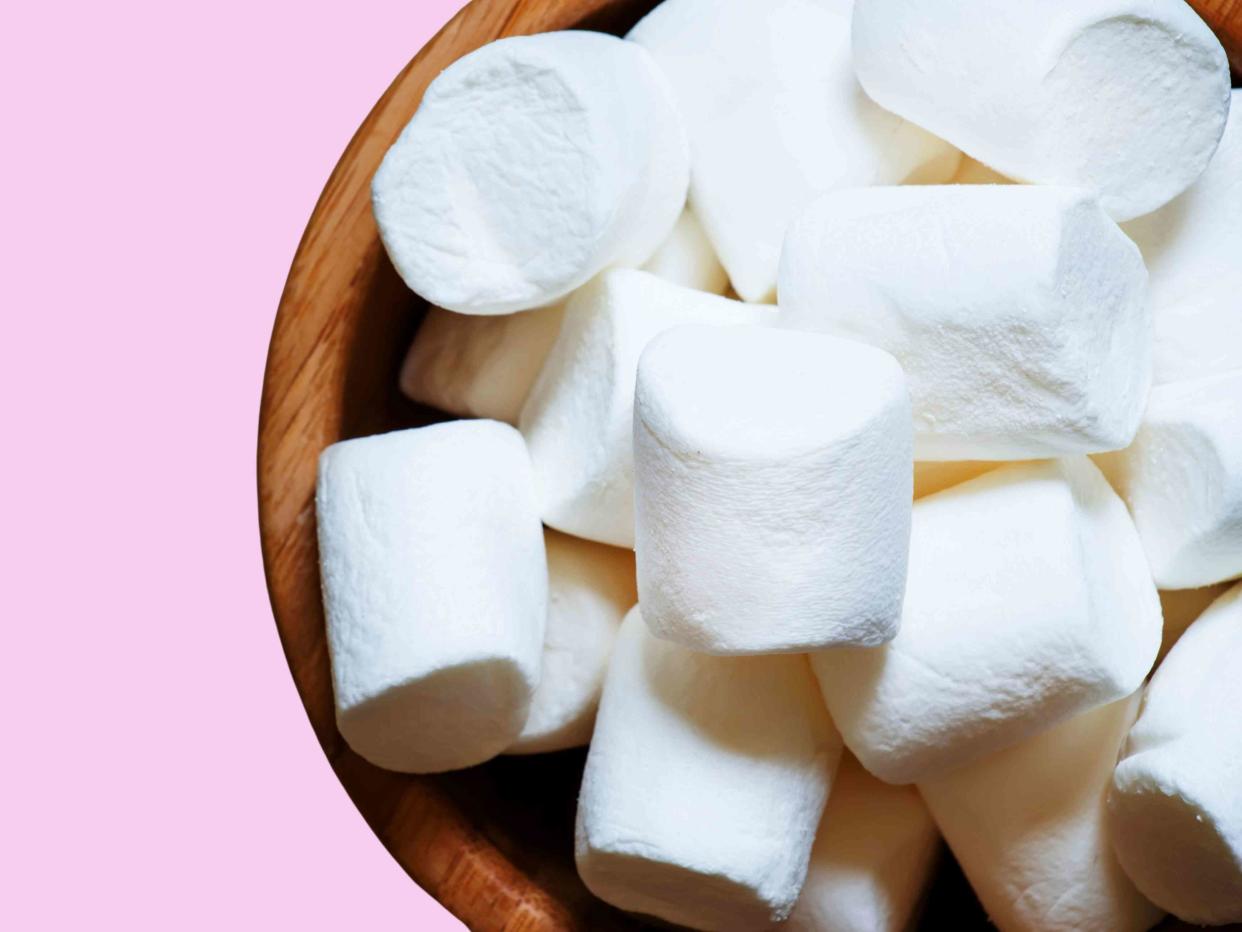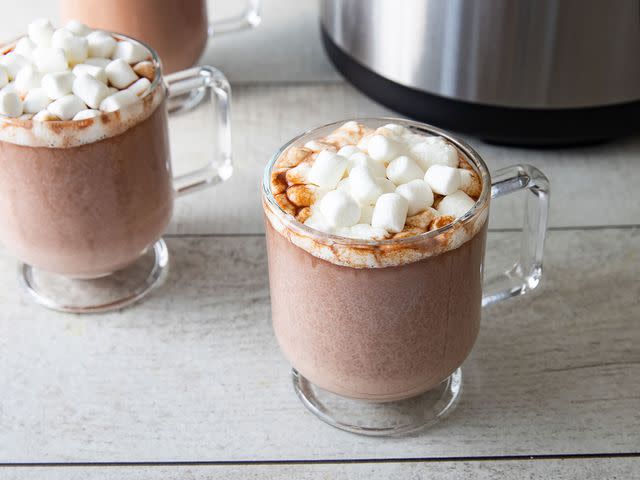What Are Marshmallows Made Of?
Plus, learn how to make your own marshmallows at home.

5PH/Getty Images
You may have never given a second thought to that fluffy confection floating atop your hot chocolate or jar of marshmallow fluff in the back of the pantry, but marshmallows have an interesting history.
What Are Marshmallows?
This sugary treat is named after the marshmallow plant, whose roots and leaves have been used medicinally for thousands of years. Unfortunately, chewing on this fibrous root tastes nothing like the mass-produced saccharine marshmallows we know today.
Marshmallows started as a candy-adjacent product when the sap of the marshmallow tree was whipped and mixed with sugar for a medicinal and coincidentally delicious treat. Over time, the recipe has evolved to include modern ingredients, but the name has stuck.

What Are Marshmallows Made Of?
Despite starting out as a medical product made from the marshmallow plant, modern marshmallows are primarily sugar. They get their flavor from artificial sources and combine sugar and corn syrup for that signature sticky sweetness.
The fluffy and chewy texture of marshmallows is thanks to gelatin, the same ingredient that gives Jell-O its jiggle. Cornstarch and powdered sugar coat the outside to keep them from sticking to one another.
How Are Marshmallows Made?
With such a simple list of ingredients, the real magic of marshmallow-making comes from technique. Taking a page from the original recipe, sugar, corn syrup, and gelatin are thoroughly whipped to trap air in the sticky batter. The sugar-gelatin mixture increases in volume exponentially as it traps air bubbles and sets with the air trapped inside, creating an ultra-fluffy texture.

Meredith Food Studios
Are Marshmallows Vegan?
Most commercially produced marshmallows are not vegan due to gelatin, which is derived from the connective tissue of livestock animals. However, with the popularity of vegan diets over the past several years, some brands have come out with vegan versions of marshmallows. These confections use other ingredients like tapioca starch or agar to mimic the gelatin and yield that fluffy, chewy texture. If you’re vegan or avoid animal products, always check the ingredients to make sure.
Homemade Marshmallows vs. Store-Bought Marshmallows
The ingredients and process for making homemade marshmallows are about the same as the ones at the store. At home, adding any preservatives or other chemicals to help whip the batter is unnecessary, as the scale is much smaller. Some marshmallow producers also add food coloring to make them look whiter, which is also unnecessary at home.
Commercial producers have giant factory equipment and whipping machines, but at home, a stand mixer will do just fine. Most recipes for homemade marshmallows contain egg whites. Eggs used to be more common in mass-produced marshmallows, but now manufacturers favor chemical stabilizers.
How to Make Homemade Marshmallows
Check out Emily's Famous Marshmallows Recipe to learn how to make homemade marshmallows, with step-by-step instructions and a detailed ingredients list. Here’s a brief overview of what you can expect when you make our top-rated recipe:
Cook sugar, corn syrup, and water together until the mixture reaches 250 to 265 degrees F.
Dissolve the gelatin in water, then remove the syrup from the heat and whisk gelatin mixture into the hot syrup.
In another bowl, whip egg whites to soft peaks. Continue to beat, pouring syrup mixture into egg whites in a thin stream, until the egg whites are very stiff.
Stir in vanilla. Spread evenly in a prepared pan and let rest overnight before cutting.

How Long Do Marshmallows Last?
If stored properly, homemade marshmallows will last at room temperature for up to three weeks. But they’re so delicious, they probably won’t make it that long. Store-bought marshmallows can stay fresh, unopened, in the pantry for up to eight months. If the expiration date hasn’t passed, they’re still safe to eat after eight months (but they might taste a little stale). If the bag is opened, aim to eat them in about two months, but up to four is fine, though the texture won’t be as fluffy.
What to Do With Homemade Marshmallows
If you can resist eating them all by themselves, homemade marshmallows have many delicious applications. Start with the classic marshmallow dishes like floating in hot chocolate, s’mores, or rice cereal treats. If you want to showcase them by themselves but still want to dress up your marshmallows, consider dipping them in chocolate or rolling them in colored sugar. You can also use homemade marshmallows in your favorite classic marshmallow desserts, which usually call for store-bought marshmallows.
Read the original article on All Recipes.






